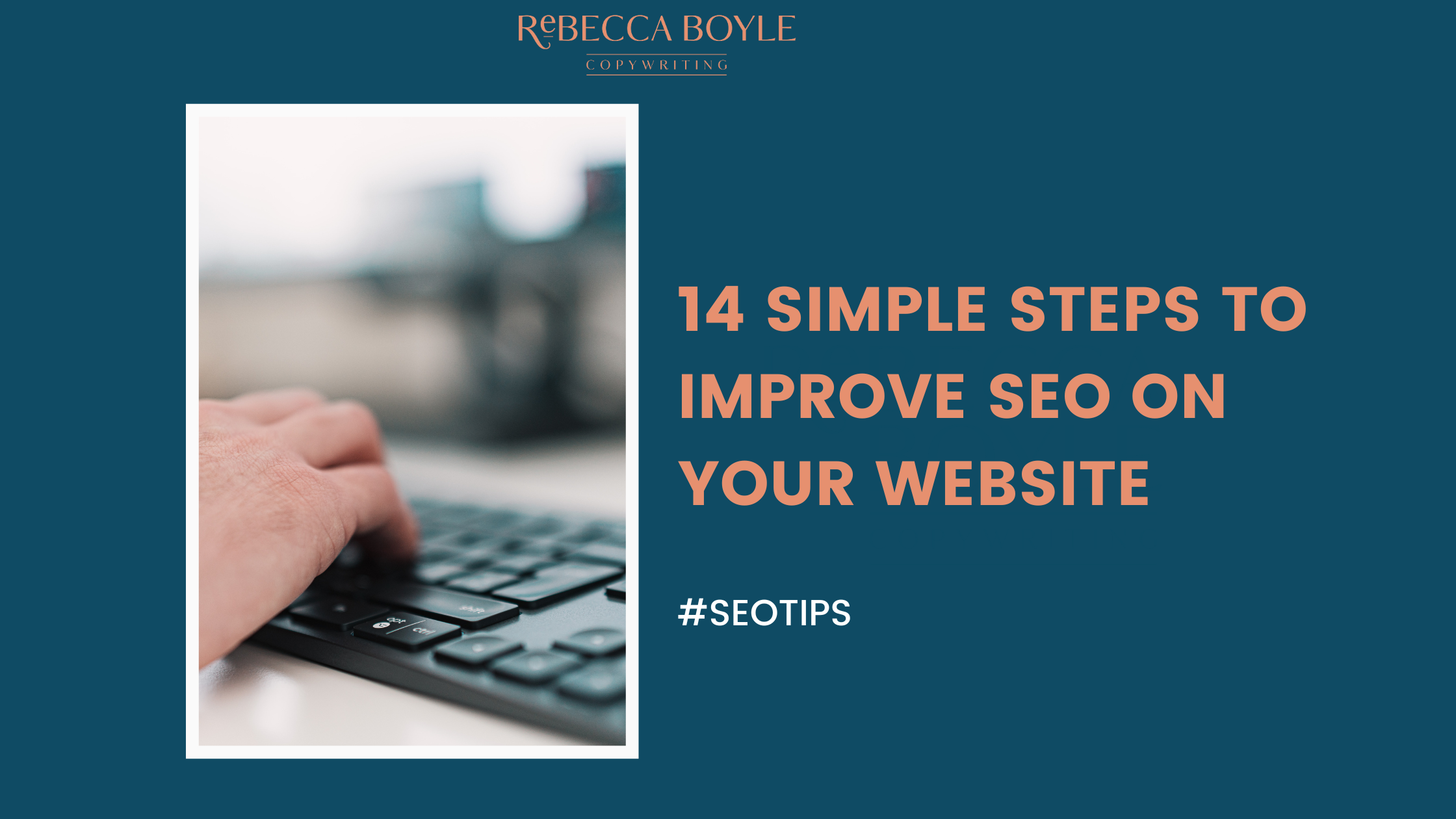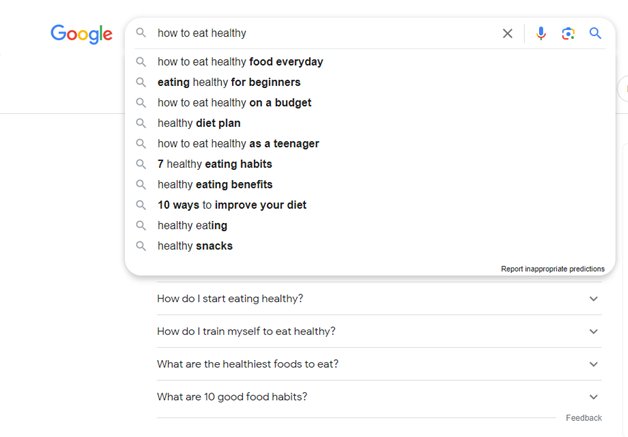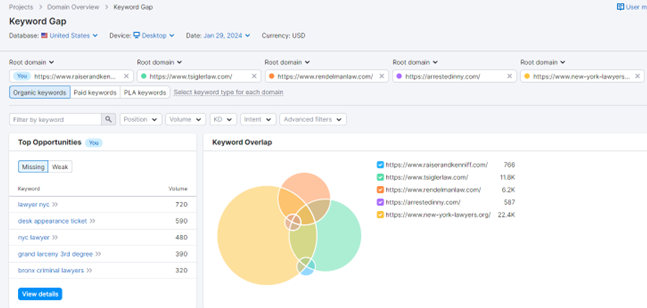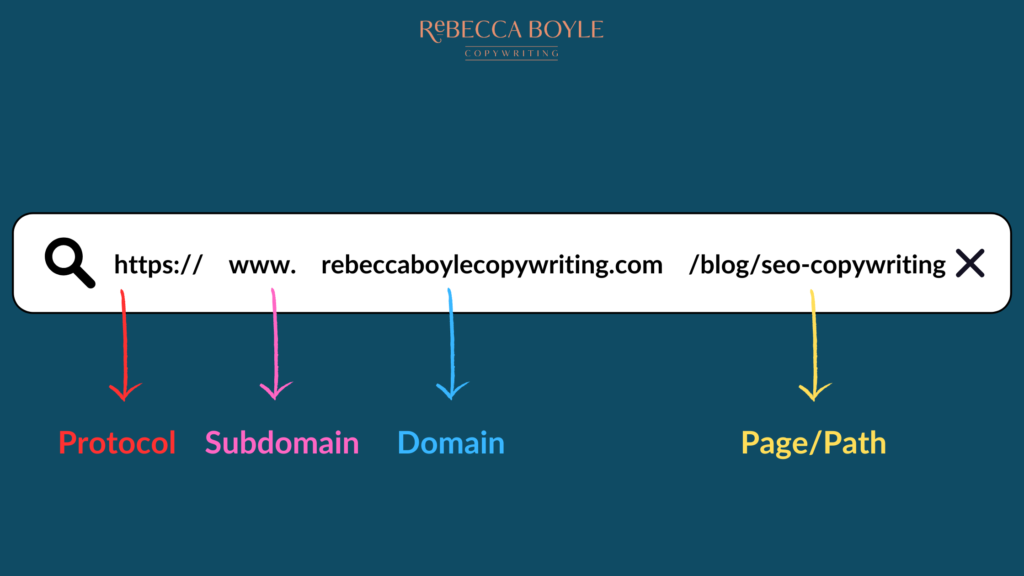
I often get asked, “Do I need SEO for my website?”
Yes. You do.
Undertaking search engine optimisation (SEO) and SEO copywriting means you are increasing the chances of your content being ranked higher on search engines, and therefore, being found by your ideal audience.
In this post, you’ll learn exactly what SEO is, how I use it to help my clients rank higher on search engines and ways you can apply it to your website.
What is SEO copywriting?
SEO copywriting is when you optimise your content to help it rank higher on search engines.
This can include adding keywords that people are using to search for your product or service into your content.
But, to rank higher on search engines, especially with the introduction of generative AI, it is important to create high-quality content.
This means answering your ideal audience’s questions, presenting unique insights, and imparting statistics from your own research.
Providing quality content that people want to read should be your main priority, then you can start implementing keywords and other SEO techniques.
Why is SEO copywriting important?
There are a lot of businesses out there all vying for your ideal audience’s attention. And they’re busy people as it is.
Applying SEO can help you stand out amongst the crowd.
SEO content writing vs SEO copywriting
Content writing is writing to inform or entertain, whereas copywriting is writing to get the reader to take an action.
Copywriting could be asking people to download an eBook, sign up for emails, or to buy a product. But content writing doesn’t have to include psychological techniques that persuade people to take action like copywriting does.
It’s important to incorporate SEO into both kinds of writing because you still want both to be found by search engines, and therefore, your audience.

Benefits of SEO copywriting include:
Increasing organic traffic
The top-ranking page gets 49% of search traffic, but the second just 12.8%. The higher you are on search engines, the more traffic you will get.
The lower your website appears in the rankings, the less likely people will click on your page. Just 0.63% of Google searchers click on results from the second page.
Getting ahead of competitors
SEO is important for small businesses or new businesses especially because they may not have a big marketing budget.
Including SEO copywriting in your marketing strategy can help you beat competitors that have more resources.
For instance, I have a client who is a start-up selling commercial cleaning products. That’s a competitive market. There are a lot of big names that can sell their goods cheaper and deliver them faster.
For my client, I created an SEO blog strategy that showed that the business was about promoting general wellbeing in the workplace by keeping it clean. I gave them free resources such as cleaning checklists and provided lots of SEO content on relevant topics.

Increasing your conversion rate
With 78% of local searches resulting in an offline conversion, it’s clear why you need to be easy to find because even if visitors don’t make a purchase on your site, they may visit your store.
SEO has a higher conversion rate compared to paid search and it’s cheaper. Organic traffic to your website has a 12.3% conversion rate versus 7% for paid search.
While more traffic doesn’t necessarily mean you’ll get more sales, investing in SEO could be a better use of your resources compared to other channels such as paid ads.
How to do SEO on your website
It’s best to get someone who knows about SEO copywriting methods to help you with optimising your website because it will be done properly and save you a lot of time. But, if you want to give it a go yourself, here’s a list of SEO basics that will help to improve your website.
1. Carry out keyword research
Finding the right keywords not only helps you to rank higher on search engines, but it can also help you with content ideas.
For example, if my business is a nutritional coaching company and I want to create content that will be of interest to my target audience, I can do keyword research to find out what they want to know.
If I type into Google ‘how to eat healthy’, the results show me what other people are searching for.

They’re searching for, ‘how to eat healthy on a budget’, ‘how to eat healthy food everyday’, and ‘healthy eating benefits’.
This gives me lots of ideas about what people want to know about nutrition, and I can create content that focuses on each of these topics.
Not only that, but I can include these targeted keywords into my writing which will help me rank higher on search engines and be found by my audience.
You don’t just want to focus on the exact keyword you want to rank for. You’ll want to focus on semantic keywords too.
Latent Semantic Indexing (LSI) keywords are words related to the target keyphrase, and you should use these too.
For example, if I search for a ‘nutritional consultant’, related phrases I can see from the search results include, ‘nutritional therapist’, ‘women’s health expert’, ‘eating plans’, ‘nutrition services for businesses’, ‘registered dietitians’, and ‘workplace wellbeing’.

These are all phrases I can use to create content that will help me rank higher on search engines and my audience will find content about this useful.
2. Search intent
Search intent is what the person typing into the search engine wants. Do they want information or do they want to buy a product?
Including keywords is great, but you must ensure they relate to the right content, so your website appears in the results for that search.
There are four types of search intent:
Navigational
This is when users are searching for a specific page such as Walmart.com.
Informational
When the searcher wants information, they might search something like ‘what are the benefits of weighted blankets?’.
Commercial
This is when the searcher wants to buy something but is still undecided on the specifics and is looking for more information.
They might type in ‘best weighted blankets’.
Transactional
When the user wants to buy something, they might search for a ‘weighted blanket’.
If I’m writing a blog about weighted blankets and use ‘weighted blanket’ as my main keyword, it’s probably not going to do well.
Why?
Because when you type ‘weighted blanket’ into a search engine, it will bring up the product.

The person searching this term is more than likely looking to buy a weighted blanket so they don’t want to read my blog about them.
It’s not just a case of adding in keywords but also understanding what the user is looking for when they are using that search term.
3. Competitors
What keywords are your competitors using?
If all your competitors are using similar keywords but you’re not, then you’re probably missing out.
You can use a tool like Semrush to compare your page with competitors.
You simply copy your web address and theirs into the ‘keyword gap’ tab, and it will show you a list of words you’re missing or are weak in compared to your competitor.
If I’m a criminal lawyer in New York and I want to find out what other criminal lawyers in New York are ranking for, I can use keyword gap to find out.
Say my website is raiserandkenniff.com, I can see that compared to my competitors, I’m missing ‘lawyer nyc’ and ‘bronx criminal lawyers’ on my website.
I can also see keywords I’m weak in, meaning I don’t use them enough, such as ‘criminal lawyer nyc’ or ‘criminal attorney nyc’.
I can then pick out which ones are appropriate for me to use and add these to my own website or write blogs around these topics.

4. URLs
A URL is the web address for each webpage.
A URL follows a certain format. In its basic form:

You should include keywords in your URLs to help you rank higher and let people know what the page is about.
You shouldn’t include any random numbers or unnecessary words.
Best practice is to:
- Keep it short
- Include keywords
- Use a hyphen between words.
This is an example of a URL that hasn’t been SEO optimised:
Now, here’s one that has:
https://backlinko.com/high-quality-backlinks
See the difference?
5. Headers
Headers or titles are important to show both readers and search engines what your page is about.
Subheadings also help to break up your text and make it easier for people to scan.
Adding keywords in your headings is a good way to guide readers and rank higher.
6. Title tags
A title tag is the name of your page. Again, you’ll want to add a keyword here and explain what the page is about.
7. Meta descriptions
A meta description is a brief bit of text that sums up your web page. You’ll find it under your website title in the search engine results.
It not only allows you to add in your keywords, but it helps entice readers to click on your link.
Readers can only see around 155 characters. Although you can use more to include more keywords but, remember the extended version won’t be visible.
Google can also change your meta description even if you specifically write one yourself, but it’s still worth doing.
Here you can see that my meta description highlights my strengths and asks readers to act (‘book my call’).

8. Formatting
If visitors land on your web page and bounce away within seconds, this doesn’t look good and could decrease your ranking.
Visitors clearly aren’t finding what they want, which is why they leave so soon. That, or your page looks terrible, and they can’t be bothered wading through it to find the information they want.
That’s why formatting is important. You want to ensure your copy is clear and direct with plenty of white space. This means spacing everything out so it doesn’t look cluttered.
People are very visual, and while your copy is important, it also needs to be presented well or people won’t bother to read it.
9. SEO for website images
When using images, make sure to give each one an image alt text. This is a description of your image.
Its main role is to aid the visually impaired who use a screen reader so it will help your website to be more accessible and increase your potential market.
It is also good for SEO because you can add in your keywords when appropriate to help you rank higher on search engines.
10. CTAs
A CTA is a call-to-action button such as ‘buy now’ or ‘learn more’.
Instead of using vague terms such as ‘shop’, add in your keywords such as ‘shop our cleaning products’ instead.

11. Videos
It’s a good idea to include different formats when you create content as it makes it more interesting to readers, and it can help you rank on search engines.
When you search on Google, some of the top results can be videos. If you’ve included a video on your blog, then this can be a good way to rank higher on search engines.
It’s also a great way for people to become familiar with you and develop a relationship which will make them trust you and encourage them to purchase from you rather than a competitor.
Videos are also a great way to get backlinks. If your videos are good, then other sites could use them on their websites which helps build your authority and attract more traffic by exposing you to other audiences.
12. Copywriting tools
There are lots of SEO copywriting tools you can use to help with your keyword research. I use Ubersuggest, SEMrush, Moz, and AnswerThePublic regularly, but there are others.
There is SEO copywriting software such as Surfer SEO which allows you to write your copy in its platform, and it will tell you your overall SEO score and provide a list of suggested keywords.
They’ll not only help with keyword research but also with backlinks, speeds, and other technical information.
13. Using generative AI for SEO
Search engines are continually changing, and this year they’ll be incorporating the use of generative AI.
Google is already trialling Generative AI in their search results.
With Generative AI, they aim to try to answer a searcher’s query without the need to click through to a website.
This could mean we see a decrease in traffic to our websites, but it should bring a higher conversion rate because the people visiting our sites are truly interested in buying from us.
Some are panicking about the introduction of Generative AI (although people are always panicking about search results) because it could make it harder to rank number 1 on Google.
But this could mean that Google will take from numerous sources to create their response which means you could have more chances to rank.
Although, how much real estate you have may be more important. This means how many different places you feature. For example, someone who is mentioned on Reddit, review sites, guest blogs, podcasts, YouTube, and their own website will possibly have more chance of ranking higher than someone who just has a website.
14. Writing SEO copy
Creating quality content has always been an important factor in terms of where you rank, and with the introduction of generative AI, it will be even more important.
AI can create copy (although it’s still not good enough) but it can’t entertain you with personal stories or give you stats on research it has conducted.
But you can do this. For your content to be different and rank high on search engines, it should have personality.
What is an SEO copywriter? (and do I need one?)
As you can see, you can carry out SEO copywriting yourself, but it’s complex and time-consuming.
The good news is that you can get an SEO website copywriter to do it for you.
Just be aware that not all copywriters will carry out SEO.
Copywriting is designed to make the reader act and involves using psychological techniques.
SEO copywriting is the same, only it includes keywords and tries to be generally optimised for search engines.
Some copywriters say they don’t need to know SEO.
I say, what’s the point of writing content if no one can find it?
If you want more traffic and steady sales through your website, get in contact with me today.
